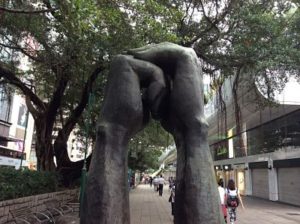You are very lucky to have found this website. Wing Chun is a high-level skill and martial art that is open to everyone. It teaches you that very little energy is required to defend oneself. It wants you to relax and move forward to occupy and enter the space of another, using small movements. To begin to comprehend this martial art, dispense with the idea of “hit and attack” and embrace the idea of “occupying space at the center” and you will draw closer to understanding its inner truths!
Wing Chun begins at the moment of the first contact between a teacher and student. It asks you to change your way of thinking about fighting and what martial arts should be: you don’t need to wrestle; you don’t need to hold; you don’t need to run; you don’t need to make large movements; you don’t need any special techniques except what your own body allows. Instead, the art offers the following advice: don’t think, adjust, use the other side, enter from a different angle, and be patient! If you listen closely, it sounds like the advice you would give someone learning to swim. Being relaxed, in every activity that you endeavor to participate in is important.

The story of Wing Chun begins 300 years earlier with Ng Moi, a Buddhist nun, who trained at the Shaolin temple. Having a brilliant mind, she sought to unify all arts into a simplified set of movements containing the essential ideas of each art. Wing Chun, therefore, is not a martial art with prescribed techniques; it is a study of movement in space and time and of how we can get from one position to another while minimizing risk.
The art became alive after, Ng Moi, witnessed a fight between a snake and a crane. By design, she managed to unify the soft, sharp and angular joint-like movements of a crane with the supple, coiling and sensory movements of a snake. This transcendent art, which fluidly combines both hard and soft movements, was nameless until Ng Moi began to teach it to her first student named “Wing Chun.”
After this student learned the art, she taught it to her husband. He taught others. The art existed for a time with actors and performers who travelled on red boats in China, eventually, finding its way onto shore in the hands of fighters and doctors of Chinese medicine, each refining the movements based on conflicts with other styles to help the art and themselves to reach increasing efficiencies. The art of Wing Chun settled in Foshan where a young boy named “Yip Man” pleaded with his father for the money to learn this great art!
Having achieved a high level of skill in the art, Yip Man refined it still further to find core movements to improve its efficiency. The result of his lifelong effort is a precise, highly sensitive, soft, adaptive and powerful art offering insights into the broad capabilities of fighting that range from attack to recovery to being present and aware. Where you fit in this mix is defined by you. Wing Chun is open to all!
